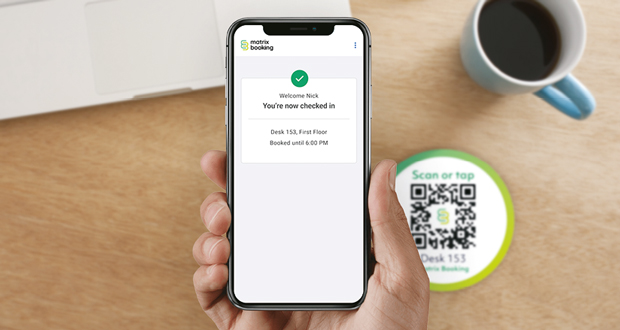 Paul Scott, CTO at Matrix Booking with advice on utilising FM software to help support both planned and actual usage in hybrid work environments
Paul Scott, CTO at Matrix Booking with advice on utilising FM software to help support both planned and actual usage in hybrid work environments
The furore surrounding Amazon’s recent directive that staff are to return full time to the workplace illustrates how flexible and hybrid work arrangements are no longer an exception, but common practice. This means facilities managers have the challenge of managing spaces that are now more dynamic and less predictable than ever before.
In this new landscape, FMs need tools that can keep pace with the constantly shifting patterns of workplace occupancy. What’s required is the ability to view and analyse space usage, not just in the moment, but also through the lens of historical trends and future forecasts. Insights are needed that allow them to understand how spaces were used in the past, how they’re being used in real-time and what that means for future planning.
LEARNING FROM THE PAST
Understanding how a workspace has been used in the past is the essential starting point for any facilities manager looking to optimise their environment. Historical data from resource bookings, check-ins and occupancy sensors provides a detailed snapshot of usage patterns. This “past view” offers valuable insights into popular areas, typical peak usage times and underused spaces or resources.
By analysing past data, managers can identify trends and make informed decisions about resource allocation and space planning at several levels. For example, starting with an overview of building usage, such as planned versus actual attendance, can reveal how different groups use the space. This top-level perspective can then be refined by examining data for specific floors or zones, and ultimately down to individual resource usage.
One practical example of this approach comes from one NHS Trust where historical data revealed that a site with 160 desks was lacking sufficient meeting rooms. By replacing 30 desks with an extra meeting room, the organisation was able to save approximately £65k per year on the cost of booking external meeting spaces.
While these historical insights provide a solid foundation for space optimisation, they only tell one part of the story. In today’s fluid and dynamic work environment, facilities managers must also consider real-time and predictive data to fully address the complexities of modern workspace management.
REAL-TIME PRODUCTIVITY AND SAFETY
Knowing how spaces are being used in real-time is crucial for responding to the immediate needs of the workplace. Real-time occupancy data, paired with environmental sensors, provides that “present view,” enabling FMs to make quick, informed decisions that keep the workplace safe, comfortable and productive.
For instance, real-time desk occupancy sensors can display live availability, allowing employees to view at a glance, which desks are available in hot desk environments or how busy the breakout spaces are. This kind of information not only helps everyone find the right spot to work, but also ensures that every part of the office is being used as efficiently as possible.
But real-time insights go beyond convenience. Monitoring air quality, temperature and other environmental factors in real-time allows you to gain a deeper understanding of how these conditions impact space usage. If a meeting room frequently becomes too warm in the afternoons, they can directly compare occupancy with environmental data, connect the dots and adjust, to keep the space comfortable and conducive to productivity.
These immediate insights also highlight opportunities for efficiency. For example, if certain areas of the office are consistently underused during specific times, closing them off temporarily could lead to significant energy savings. Or, if a particular room is often empty despite high demand elsewhere, it might be due to excessive noise, suggesting a need for soundproofing or rearranging the space to make it more usable.
ANTICIPATING FUTURE NEEDS
The “future view” in workspace management revolves around forecasting trends and needs, which is crucial in a hybrid work environment. Predictive insights enable facilities managers to anticipate when and how spaces will be used, helping to prevent issues like overcrowding or underutilisation. For example, if higher office attendance is expected on certain days, managers can prepare by opening more meeting rooms or adjusting cleaning schedules.
These predictive capabilities also guide strategic decisions, such as developing policies that are responsive to the needs of the organisation and its employees. When an organisation is considering a mandate for in-office work or exploring ways to attract employees back to the office, understanding future booking patterns and anticipating changes is key.
Ultimately, as businesses grow or evolve, predictive insights are vital for long-term planning. Whether planning for increased collaboration or considering rightsizing, this future-focused approach keeps workspaces efficient and well-suited to the organisation’s needs.
Managing workspaces in a dynamic environment requires both flexibility and adaptability. The ability to draw insights from past and present to predict the future enables FMs to make informed decisions about space optimisation, resource allocation and cost management. By having the right tools to analyse and act on these insights, facilities managers can make sure that workspaces are not only efficient and cost-effective, but also responsive to the evolving needs of a hybrid workforce.





